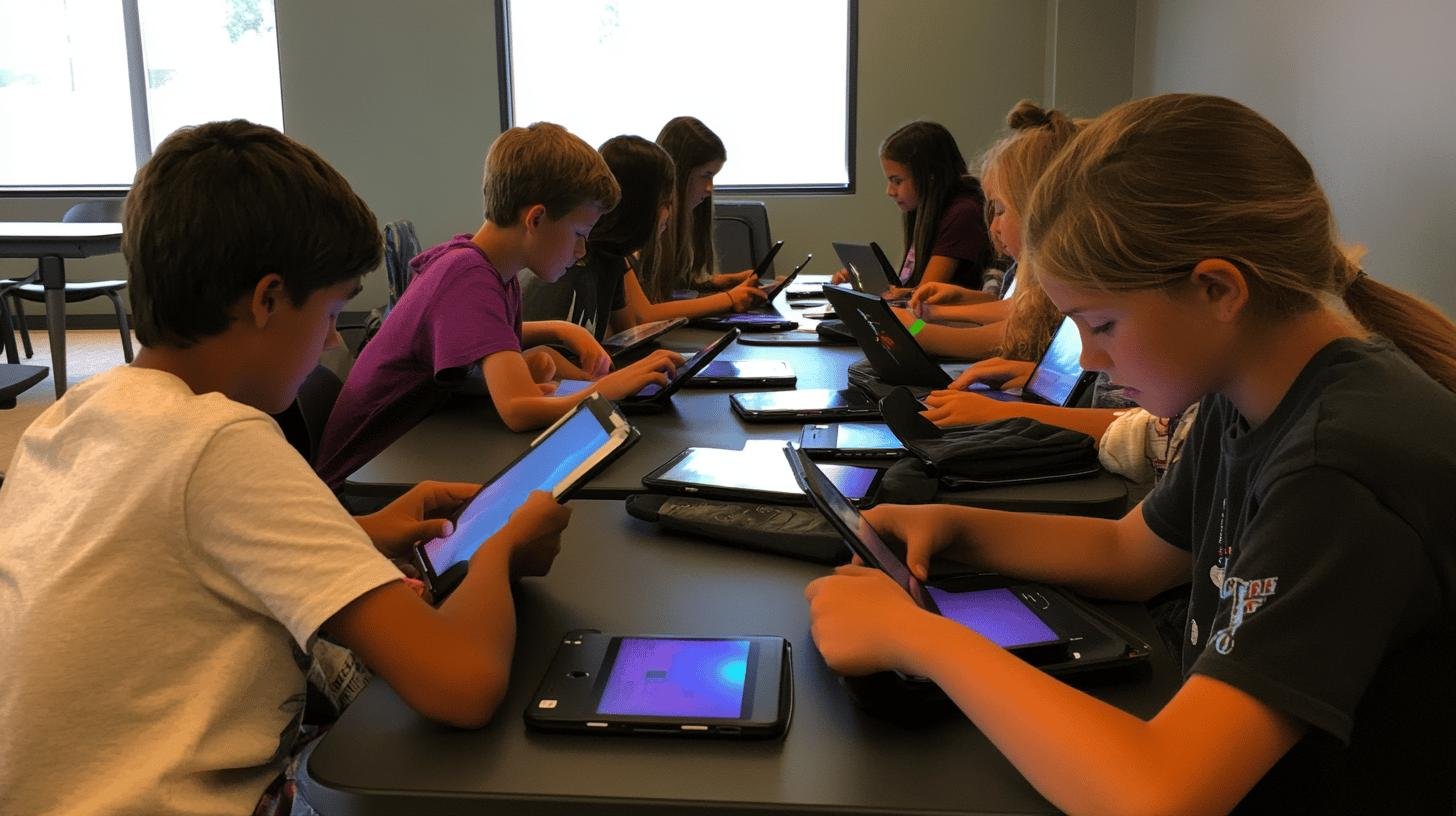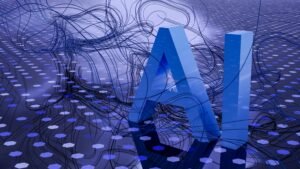Can AI reform how we learn? It’s transforming tutoring into a personalized journey. Imagine having a tutor that knows your strengths and helps you through tricky spots—24/7. AI systems do this brilliantly, making learning feel tailor-fit for you. In this article, we will uncover how AI is sculpting personalized educational experiences. From analyzing your performance and giving instant feedback to crafting unique learning paths, AI is reshaping the future of education. So, how is AI used in tutoring success? Let’s find out!
How is AI Used in Tutoring with Personalized Learning?
Imagine a tutor who knows exactly where you need help. AI algorithms do that by analyzing student strengths and weaknesses. They work like detectives, identifying where a student struggles and where they excel. This information helps AI systems create a personalized learning plan for each student. It’s no longer a one-size-fits-all approach—more like a custom-made suit for learning.
What’s even cooler is that AI systems are available 24/7. Need math help at midnight? No problem! You get instant feedback, like having a teacher on call to say, “You got it!” or “Let’s try again.” This constant support allows students to learn at their own pace without waiting for the next class.
Since AI adapts to each student’s needs, it creates educational pathways that keep students engaged. It’s like a GPS for learning, guiding students through tough spots and celebrating wins. Catering to individual learning styles, AI in education helps students learn better and makes learning feel exciting and personal.
Adaptive Learning Technology in AI Tutoring

Adaptive learning technology acts like a smart GPS for students. It adjusts learning paths in real-time based on student understanding. If you breeze through algebra but hit a wall in geometry, the system adapts, giving more practice where needed. This technology turns tutoring into a personalized experience, ensuring every minute spent learning is effective.
Here’s how different AI tools support various learning styles:
- Visual Learners: AI creates dynamic visualizations and diagrams for complex topics.
- Auditory Learners: Offers audio explanations, making material easier to grasp by listening.
- Kinesthetic Learners: Interactive simulations and games promote hands-on exploration.
- Reading/Writing Learners: AI provides reading materials and encourages note-taking.
- Social Learners: Some platforms have community features for peer discussions.
By offering diverse courses and detailed subject knowledge, adaptive learning technology goes beyond adjusting lessons. It helps students delve deep into topics, ensuring they truly understand the material. Picture it as having a super-smart buddy guiding you through challenges. This technology boosts learning outcomes by meeting each student’s needs, making education an exciting adventure.
Automating Grading and Real-Time Feedback with AI
How does AI automate grading in schools? AI tools grade assignments faster and more accurately than humans. Imagine a robotic teacher that quickly processes papers, giving each the attention it deserves. These AI-driven tools save teachers time, letting them focus on teaching. Plus, they spot errors humans might miss, ensuring fair and consistent grading.
Why is real-time feedback crucial for students? It helps them learn faster and more effectively. Imagine answering a question and instantly knowing if you’re right or wrong. AI systems provide immediate feedback so students know how they’re doing and where they need improvement. It’s like having a personal tutor guiding you along the way. Teachers also benefit by seeing students progress quickly and tailoring lessons accordingly.
AI’s Impact on Student Engagement and Accessibility

How does AI improve accessibility in education? AI offers educational content anytime, anywhere, revolutionizing access for students globally. Imagine studying whenever and wherever suits you best—early morning or late at night. This 24/7 availability means students can learn when it’s convenient.
Here’s how AI impacts student engagement:
- Personalized learning keeps students motivated by offering tailored lessons.
- Instant Feedback maintains interest by quickly showing students their progress.
- Interactive content engages students through simulations and educational games.
How is AI used in tutoring, and how does AI support students from diverse backgrounds? AI ensures educational equity by offering resources for various learning needs and languages. It’s like having a tutor who speaks your language and understands your challenges. This is crucial for students struggling in traditional settings. AI levels the playing field, giving everyone a fair shot at success.
Success Stories and Future Trends in AI Tutoring
Have you heard about schools improving test scores with AI tutoring? A school district in California implemented AI solutions and saw a big performance boost. AI tailored lessons to each student, focusing on weaknesses. Students improved scores and felt more confident in tough subjects. This shows AI’s real impact on learning.
Future Trends in AI Tutoring
What’s next for AI in education? Imagine classrooms where AI tools are as common as textbooks. We’re talking about smart systems adapting to each student’s learning style. Future AI might predict struggles and offer help before a student falls behind. How cool is that? Expect AI tutoring to include virtual reality (VR) for immersive learning or augmented reality (AR) to make history come alive.
Further on this, AI’s impact on education is massive. Imagine every student getting the help they need, regardless of background or learning style. AI could personalize and enhance learning for everyone. By integrating these tools, schools make education exciting and engaging. It’s not just about getting better grades; it’s about making learning a fun journey every student can enjoy.
Conclusion
AI is transforming tutoring by offering personalized learning and real-time feedback. With the power of adaptive learning technology, students get tailored educational paths and 24/7 access to resources. This makes learning super engaging and accessible.
Thanks to AI, teachers save time with automated grading, letting them focus more on their students. As AI continues to evolve, we’re seeing more success stories like improved test scores and innovative educational tech in classrooms.
AI’s role in tutoring is just getting started. It’s exciting to think about the future changes that AI can bring to education!
FAQ
How Can AI Be Used in Teaching?
AI analyzes student performance to tailor lessons, offering personalized learning paths. It provides instant feedback and adapts to learning needs, maximizing engagement and comprehension. Teachers can focus more on students’ needs.
What are the Benefits of AI Tutoring?
AI tutoring gives customized learning experiences with 24/7 accessibility. It offers immediate feedback, which strengthens understanding and supports individual pace learning. It also frees up teachers for more personalized support.
What is the Role of an AI Tutor?
An AI tutor assesses each student’s strengths and weaknesses, adjusting lessons accordingly. It offers continuous support and adapts to learning styles, creating interactive and engaging educational experiences.
What is an Intelligent Tutoring System Using AI?
An intelligent tutoring system uses AI to simulate one-on-one teaching. It monitors progress and provides custom feedback, allowing students to learn efficiently by adjusting material to suit their specific needs and pace.
What is the Best AI Tutor for Students?
The best AI tutor depends on individual learning preferences. Look for systems that offer personalized feedback, adaptability to learning paces, and a wide range of subjects. Consider platforms like Google AI Tutor for comprehensive support.




